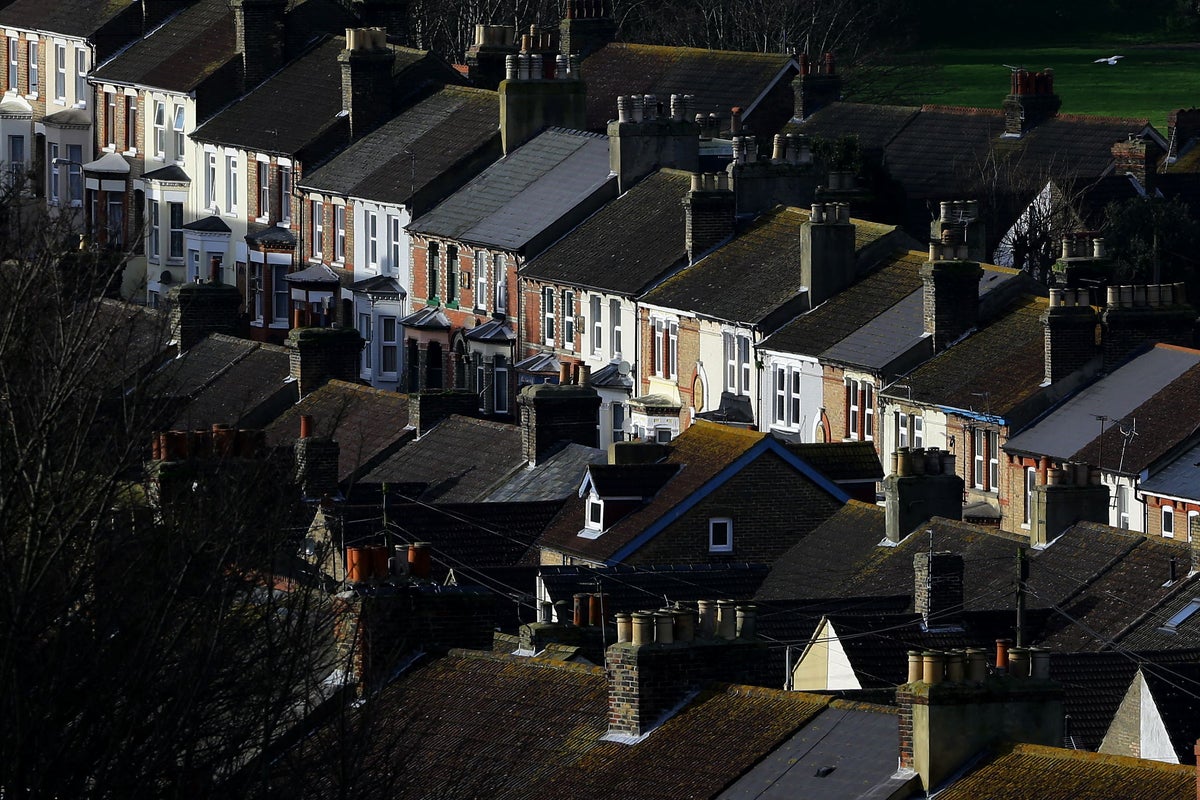
Annual house price growth turned negative for the first time since 2012 in May, according to an index.
Across the UK, house prices fell by 1.0% on average, Halifax said.
It marked the first annual decline since December 2012.
The average house price remained flat month on month, with 0.0% growth in May, sitting at £286,532.
As expected, the brief upturn we saw in the housing market in the first quarter of this year has faded— Kim Kinnaird, Halifax Mortgages
Kim Kinnaird, director, Halifax Mortgages, said: “Given the effectively flat month, the annual decline largely reflects a comparison with strong house prices this time last year, as the market continued to be buoyant heading into the summer.
“Property prices have now fallen by about £3,000 over the last 12 months and are down around £7,500 from the peak in August.
“But prices are still £5,000 up since the end of last year, and £25,000 above the level of two years ago.
“As expected, the brief upturn we saw in the housing market in the first quarter of this year has faded, with the impact of higher interest rates gradually feeding through to household budgets, and in particular those with fixed-rate mortgage deals coming to an end.
“With consumer price inflation remaining stubbornly high, markets are pricing in several more rate rises that would take (the Bank of England) base rate above 5% for the first time since the start of 2008. Those expectations have led fixed mortgage rates to start rising again across the market.
“This will inevitably impact confidence in the housing market as both buyers and sellers adjust their expectations, and latest industry figures for both mortgage approvals and completed transactions show demand is cooling.
“Therefore further downward pressure on house prices is still expected.”
Lenders continue to increase their mortgage rates, pulling products with little or no notice in response partly to funding costs and in response to what other lenders are doing— Mark Harris, SPF Private Clients
Nathan Emerson, chief executive of estate agents’ body Propertymark, said: “House prices are holding steady, and we are in a sturdy market.
“Propertymark data has found a 70% increase in properties available for sale compared to April 2022, showing confidence from sellers, and giving buyers more choice and room for negotiation.”
Matt Thompson, head of sales at London-based estate agent Chestertons, said: “In May, the property market was predominantly driven by buyers who were seeking a home rather than an investment.”
Jamie Minors, managing director at Norwich-based estate agent Minors & Brady, said: “Though the annual rate of house price growth is in the red for the first time since 2012, this has a lot to do with the strength of the property market this time last year.”
Mark Harris, chief executive of mortgage broker SPF Private Clients, said: “Lenders continue to increase their mortgage rates, pulling products with little or no notice in response partly to funding costs and in response to what other lenders are doing.
“This will inevitably impact what buyers can afford and in some cases they may put decisions on hold until the situation improves.
“Swap rates, which underpin the pricing of fixed-rate mortgages, have settled since the inflation news sent them soaring. If this continues, we would expect mortgage pricing to also become less volatile.”
The UK housing market is coming back down to earth after a strong three years, not falling off a cliff— Tom Bill, Knight Frank
Tom Bill, head of UK residential research at estate agent Knight Frank, said: “This is unlikely to be the last national house price index to fall into negative territory this year.
“Mortgage rates will keep edging up as wage growth keeps core inflation stubbornly high and we expect prices to fall by around 5% this year.
“However, this isn’t the global financial crisis part two for house prices and any decline will be kept in check by rising wages, low unemployment, cash sales, record-high levels of housing equity, longer mortgages and savings amassed during the pandemic.
“The UK housing market is coming back down to earth after a strong three years, not falling off a cliff.”
Here are average house prices across UK nations and regions, according to Halifax, with the annual percentage change. The regional annual change figures are based on the most recent three months of approved mortgage transaction data:
– East Midlands, £333,364, minus 1.0%
– Eastern England, £240,040, 0.2%
– London £536,622, minus 1.2%
– North East, £187,334, 1.5%
– North West, £169,394, 1.6%
– Northern Ireland, £223,795, 1.6%
– Scotland, £201,596, 1.3%
– South East, £385,943, minus 1.6%
– South West, £301,079, minus 1.4%
– Wales, £218,365, 1.1%
– West Midlands, £251,137, 2.7%
– Yorkshire and the Humber, £205,035, 2.3%







